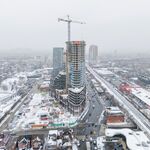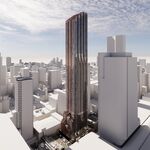nhui06
Active Member
Plan in the works to redesign King Street
A year from now, the traffic-clogged street could be transformed into a free-flowing transit/pedestrian corridor from Liberty Village to the Distillery District.
http://www.thestar.com/news/gta/201...-redesign-king-street-and-quickly-keenan.html
If they do go ahead with this, wonder if SmartTrack should seriously consider adding a stop at Cherry St where the King Streetcar loop is. Will serve as a good connector for those who want to get off SmartTrack to use the King ROW streetcar.




